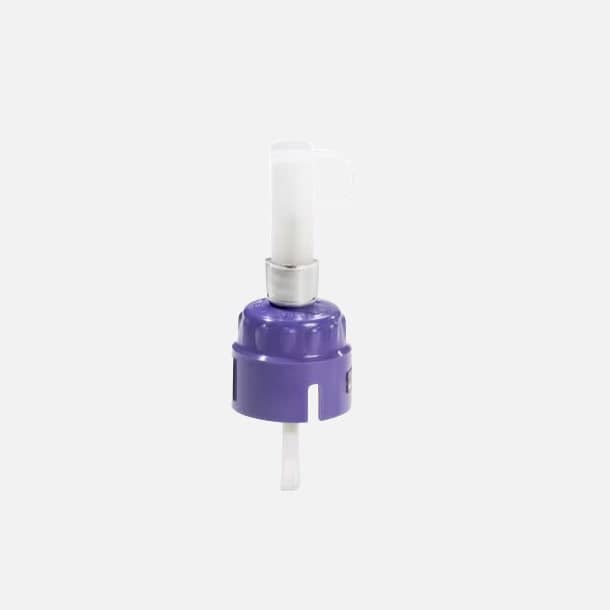Call Us
1 800 334-1583
Vol. V: Isoflurane vs Sevoflurane: Key Differences in Physical Properties – Part I

Any inhalation anesthetic agent, when present in concentrations high enough to produce surgical anesthesia, will in some measure depress cardiovascular function. This is not news to anyone who administers anesthesia. There is not universal agreement about the comparative efficacy of isoflurane and sevoflurane. With the advent of generic sevoflurane, there may be more interest in sevoflurane. This issue of Vapors will compare the physical characteristics of the two agents and how they affect technique.
Key Physical Properties of Anesthetic Agents
The important physical properties for this discussion are as follows: vapor pressure (VP), blood/gas partition coefficient (BGC), biotransformation, and minimum alveolar concentration (MAC). (See Table 1) These properties determine the type of equipment and how it is used, so a basic knowledge of them is beneficial to patient safety.
Vapor Pressure (VP) and Its Impact on Vaporization
The VP of a liquid defines how easily or quickly the liquid evaporates. If the VP is high, the liquid will vaporize quickly and requires better control if the concentration desired is relatively low. The vapor pressure for isoflurane (iso) is 240 torr. To calculate the volume % of iso in the sump of a vaporizer, 240 torr is divided by 760 torr x 100. The result is 31%. This is far higher than the lethal concentration, so the vaporizer must be manufactured to precisely control the mixing of oxygen and iso vapor.
Vapor Pressure Comparison: Isoflurane vs Sevoflurane
Doing the same calculation for sevoflurane (sevo) will result in a concentration of 21% — again requiring precision in the vaporizer. The differences in VP require different vaporizers for the agents. If a sevo vaporizer is filled with iso, the result would be approximately a 50% increase in the output because the vapor pressure of iso is 50% higher than that of sevo.
The Importance of Precise Vaporizer Control
The manufacture of the vaporizer not only requires precise control but it must be precise control at the correct VP.
| Iso | Sevo | |
|---|---|---|
| Vapor Pressure (VP) (torr) | 240 | 157 |
| Blood Gas Coefficient (BGC) | 1.46 | 0.68 |
| Minimum Alveolar Concentration (MAC) | 1.31% | 2.36% |
| Biotransformation (% of total dose) | 0.25 | 3.0 |
Blood/Gas Partition Coefficient (BGC) and Its Impact on Anesthetic Depth
The blood/gas partition coefficient provides a way to predict the speed of induction, recovery, and changes in anesthetic depth. If an agent has a coefficient of 1, this means that at equilibrium, the concentration of anesthetic in the blood will be 10 times greater than in the alveoli. Another way of expressing it is that with equal volumes of alveolar gas and blood, the blood will have 10 times more anesthetic than the alveoli. Observing the coefficients of isoflurane (iso) and sevoflurane (sevo) in Table 1, it is easy to understand why induction and recovery with sevo are quicker. The BGC for sevo is less than half the value for iso. It must be remembered that differences in techniques may reduce the differences between iso and sevo induction and recovery.
Minimum Alveolar Concentration (MAC) and Dosing Potency
The MAC of an agent is an attempt to describe the dose of anesthetic required, or its potency. By definition, MAC is the alveolar concentration of anesthetic at which 50% of subjects will not respond to a supramaximal noxious stimulus. Even though we dose the agents to effect, MAC helps to approximate the dose (concentration) required. This dose is typically about 1.5 times the MAC value in normal healthy patients for surgery. From Table 1, the concentration of iso would be approximately 2%, while for sevo, it would be approximately 3.5%.
It must be remembered that many factors can increase or decrease the MAC value. The 3rd edition of Lumb and Jones’ Veterinary Anesthesia lists 15 compounds, including drugs, that decrease MAC, 5 drugs that increase MAC, and 9 physical conditions that affect MAC. It should be evident that observation of the patient is the most effective way to assess the depth of anesthesia.
Metabolism of Isoflurane and Sevoflurane
Very little of the total dose of iso and sevo is recovered as metabolites (see Table 1). This eliminates much of the potential for acute and chronic toxicities from intermediate or end-point metabolites. These percentages (3% for sevo, 0.25% for iso) mean that 97% of the sevo dose and 99.75% of the iso dose are eliminated via the lungs in the same form they were administered.
The next issue of Vapors will continue with information about generic sevoflurane and a new vaporizer available for sevo.





